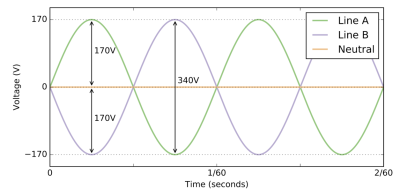Yes, potentially. In reality, no lineman will touch a line that has not been isolated and verified unenergized from both ends they are working on. The safety record of 99.999% of linemen is exemplary. There is that one aw-crap though that gets through the cracks occasionally.Hopefully @dennishoddy will chime in quickly, but pay attention to the bit about the transfer switch. Get that part wrong, and your generator will backfeed the line and potentially kill someone.
A homeowner that doesn't isolate the home is more likely to waste wattage back feeding their neighbors homes, and possibly having a phase short if they are reversed by someone that isn't familiar with electrical standards.










